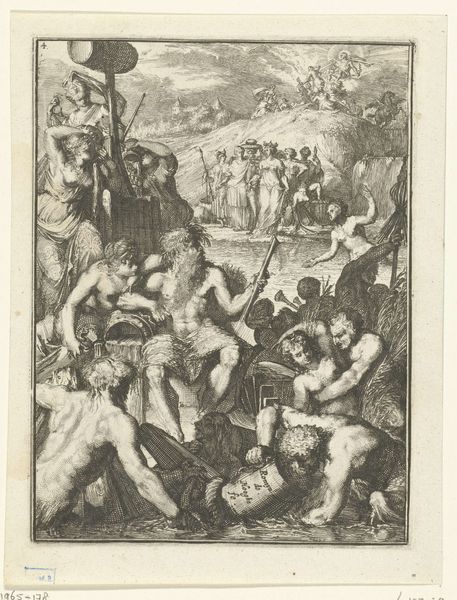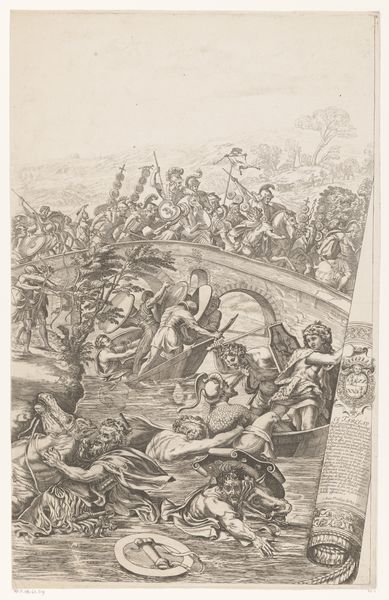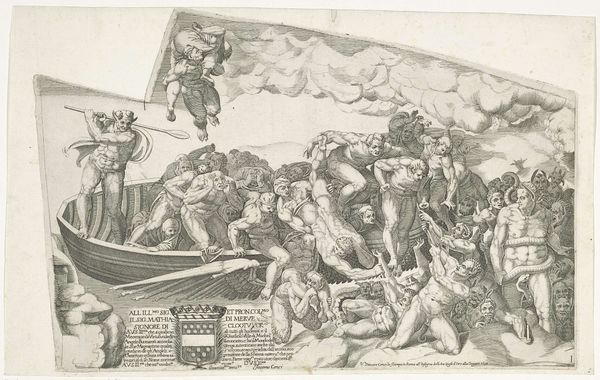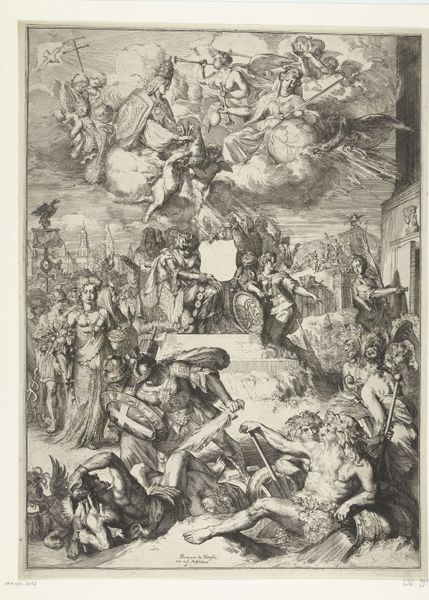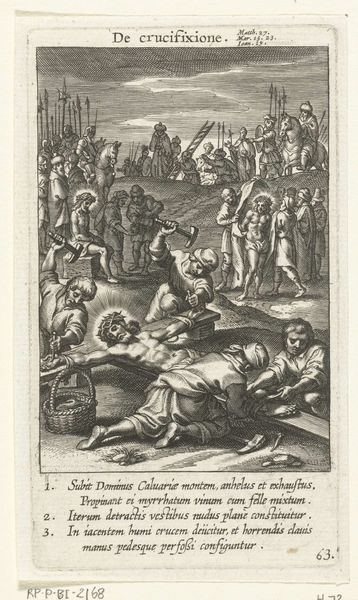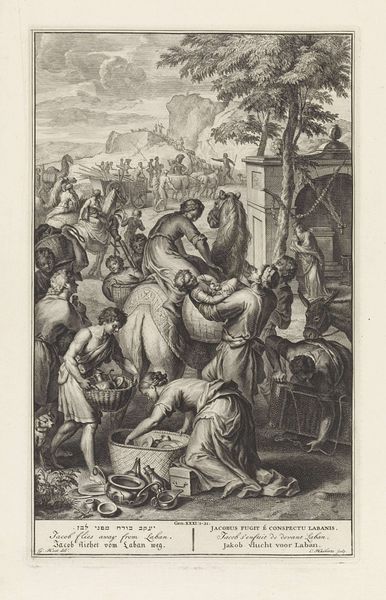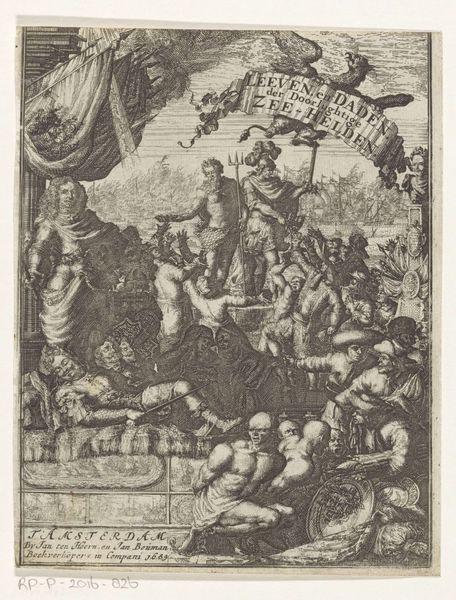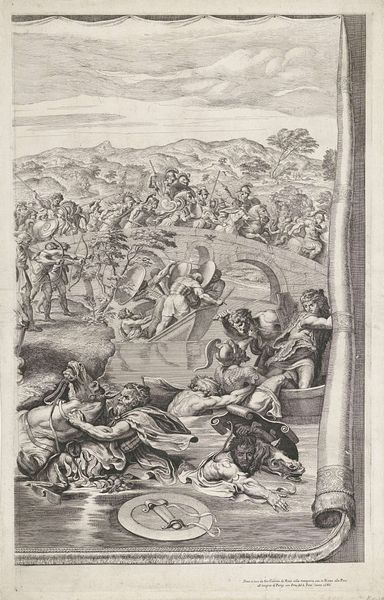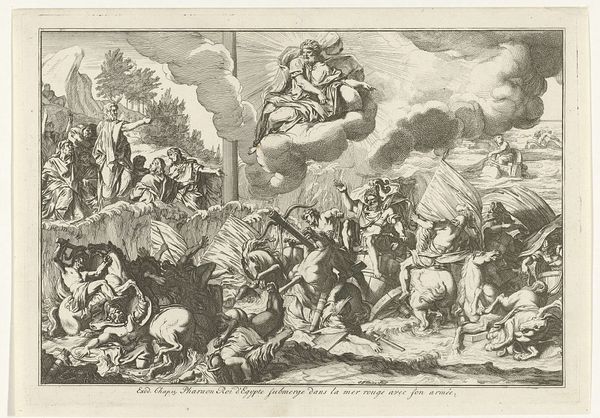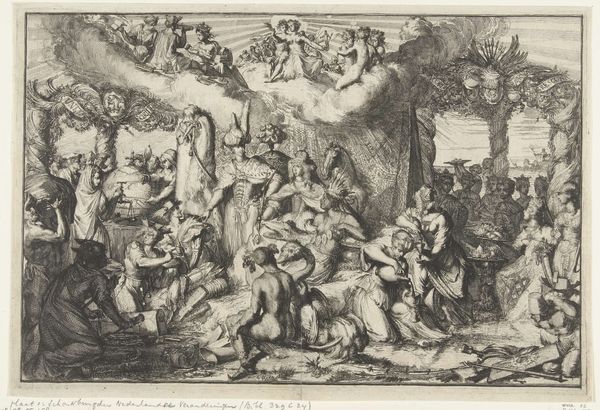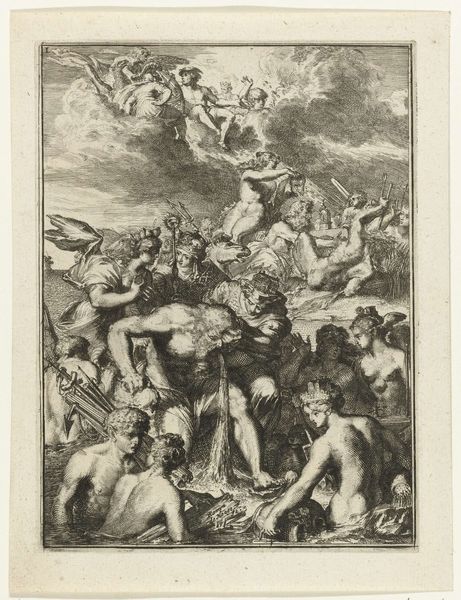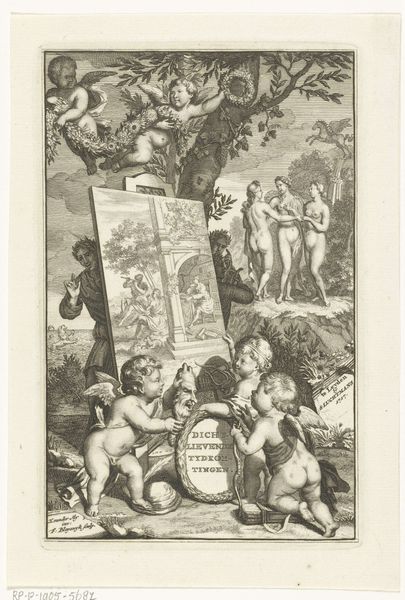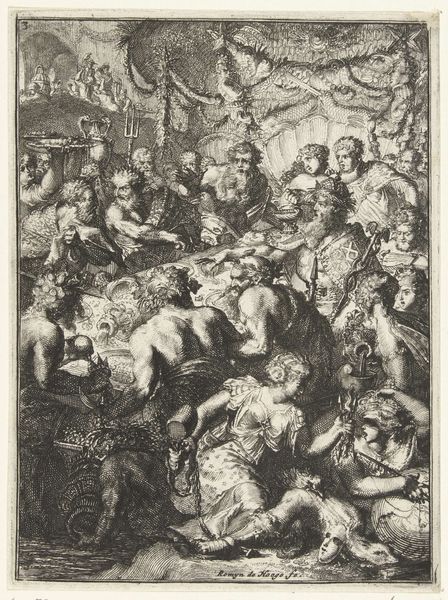
Titelprent van Boek 2 van De Ystroom (1671) van Antonides van der Goes 1671
0:00
0:00
romeyndehooghe
Rijksmuseum
print, engraving
#
baroque
# print
#
old engraving style
#
figuration
#
history-painting
#
engraving
Dimensions: height 172 mm, width 129 mm
Copyright: Rijks Museum: Open Domain
Curator: What a compelling and chaotic composition. It practically leaps off the page with its density and dramatic arrangement. Editor: Indeed. This is the title print from Book 2 of Antonides van der Goes's "De Ystroom" (The Y River), created in 1671 by Romeyn de Hooghe. It's currently held in the collection of the Rijksmuseum. De Hooghe was a master engraver; his works provide insights into the cultural climate of the Dutch Golden Age. Curator: The texture achieved through the engraving is remarkable. Notice the contrast between the tightly packed figures in the lower half and the relatively sparse upper register. It creates a dynamic push and pull. And those fine lines—the burin work gives form and depth so that we can even see that some characters are partially submerged in the water. Editor: Water is indeed central. Given the book's focus, "De Ystroom" being about the River IJ. Consider the river god at the center, presiding over a teeming mass of humanity and mythic creatures. Water nymphs peek up to survey all of the commerce, trade and, frankly, history associated with the IJ. The IJ, you see, functions almost as a vein to the lifeblood of Amsterdam. Curator: Fascinating. But looking at just the composition, observe how the receding lines create a sort of implied space, or stage almost. Are we invited into the proscenium here to reflect on figures from Roman Triumph perhaps or some aquatic themed theater design? Editor: Undoubtedly, those elements were top of mind in the Dutch Golden Age. Those iconographic details, like the trident carried by the river god, and those putti playfully bearing the city’s symbols overhead; those motifs build layers of meaning onto both Amsterdam’s trade power and ancient history, and create both a statement of wealth and a self-aware sense of authority. Curator: So it becomes more than just an illustration. It functions almost as a symbolic program within a structured frame. A Baroque semiotic device, really! Editor: Precisely. It’s this convergence of formal elements with layers of embedded cultural memory, isn't it, which renders it such a captivating piece. Curator: A work like this demonstrates how crucial understanding structure is in making art come alive. Editor: And equally how understanding art requires understanding of cultural values to decode its depths.
Comments
No comments
Be the first to comment and join the conversation on the ultimate creative platform.
